Data Center Professional (JNCIP-DC) Exam Questions and Answers
You are asked to build redundant gateways in your EVPN-VXLAN environment, but you must conserve address space because these gateways must span across seven PES. What should you implement on the PEs lo satisfy these requirements?
You are asked for TX and RX traffic statistics for each interface to which an application server is attached. The statistics need to be reported every five seconds. Using the Junos default settings, which telemetry method would accomplish this request?
Exhibit.
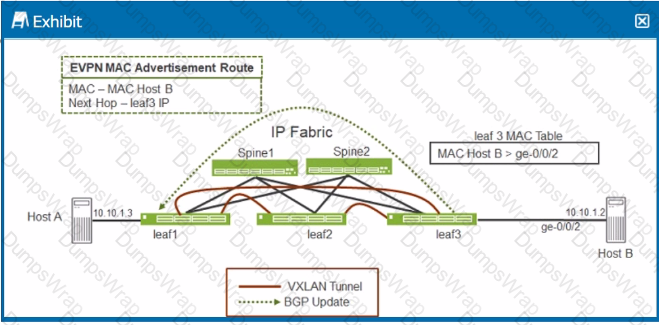
Referring to the exhibit, when Host A sends an ARP request for Host B's IP address, which Junos feature does leaf1require to send an ARP response back to Host A without having to send a broadcast frame over the fabric?
You are asked to automatically provision new Juniper Networks devices in your network with minimal manual intervention Before you begin, which two statements are correct? (Choose two.)
Exhibit.
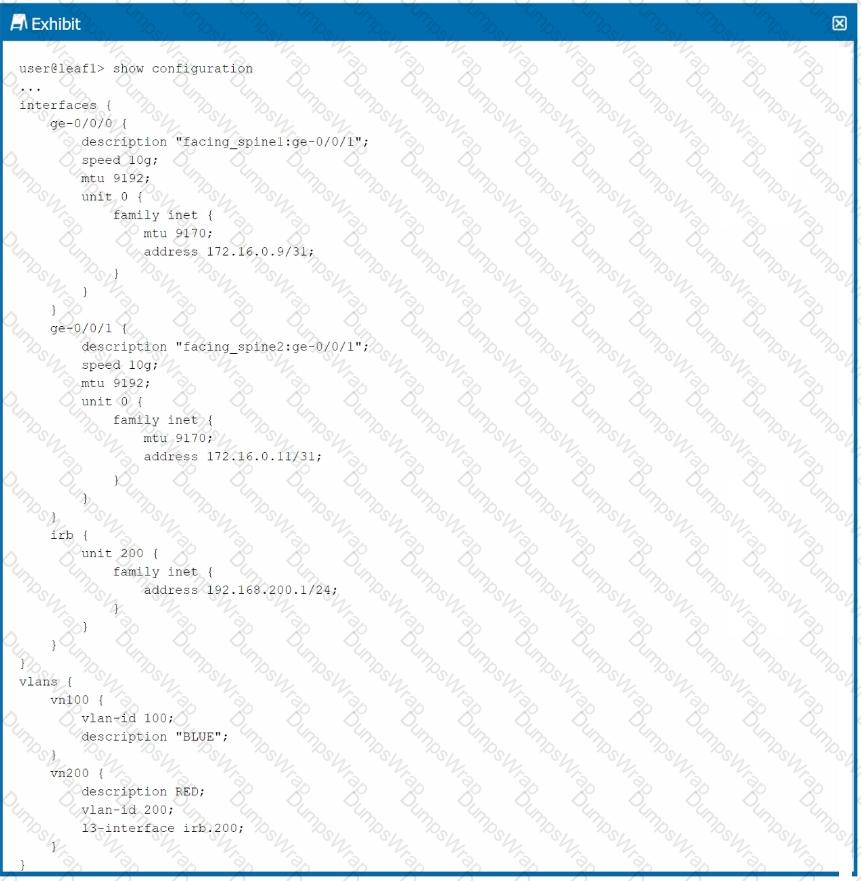
Host A is connected to vlan 100 on lead. Host B is connected to vlan 200 on leaf1. Host A and Host B ate unable to communicate. You have reviewed the touting and your hosts have the correct default route (.1)
Referring to the exhibit, which two commands will solve the problem? (Choose two.)
Whatare two ways in which an EVPN-signaled VXLAN is different from a multicast-signaled VXLAN? (Choose two.)
You want to provide a OCI that keeps each data center routing domain isolated, while also supporting translation of VNIs. Which DCI scheme allows these features?
Exhibit.
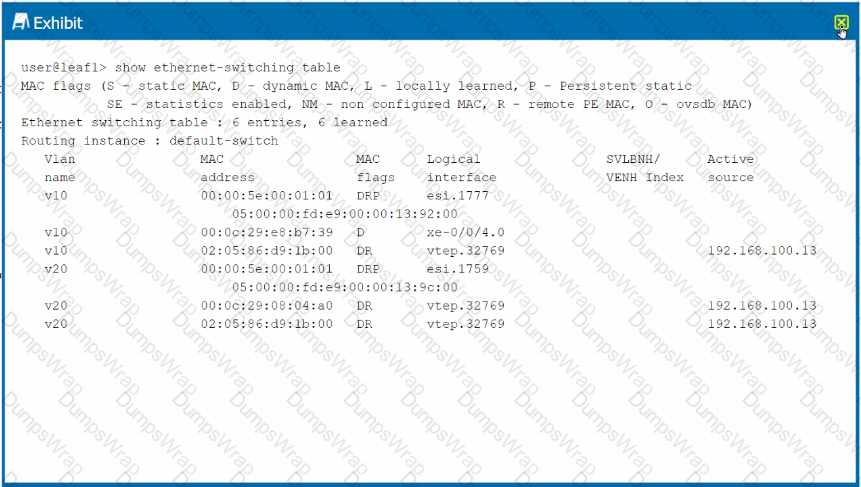
Referring to the exhibit, why is the active source field blank for the entry that uses the 00:0c:29:e8:b7:39 MAC address?
What are three actions available tor MAC move limiting? (Choose three.)
In your EVPN-VXAN environment, you want to prevent a multihomed server from receiving multiple copies ofBUM traffic in active/active scenarios. Which EVPN route type would satisfy this requirement?
You are preparing an sFlow monitoring system configuration.
In this scenario, what Information will be included in the datagram sent to the sFlow collector? (Choose two.)
You are asked to identify microburst traffic occurring in the network leading lo packet drops in your data center switches Which two tools would be used in this scenario? (Choose two.)
Exhibit.
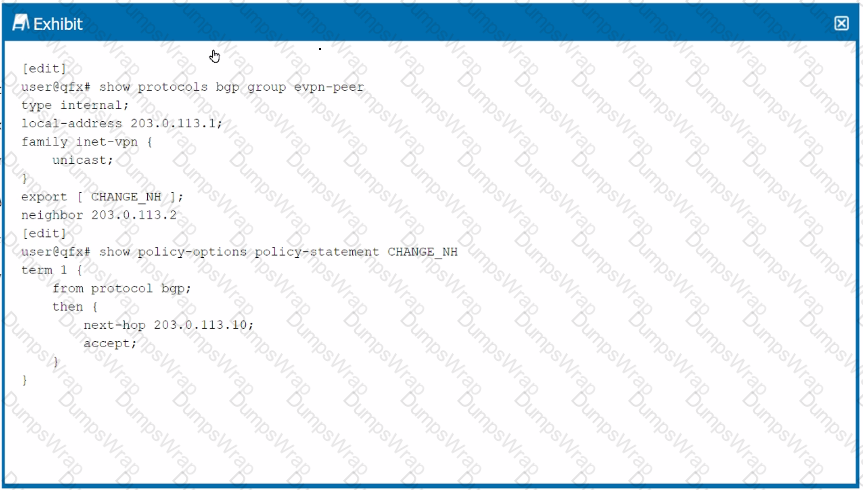
Given the configuration shown in the exhibit, why has the next hop remained the same for the EVPN routes advertised to the peer 203.0.113.2?
You are asked to interconnect two of your company's data centers across an IP backbone. Both data centers require Layer 2 and Layer 3 connectivity. In this scenario, which three actions would accomplish this task? (Choose three.)
Which three statements are correct about VXLAN control planes? (Choose three.)
Exhibit.
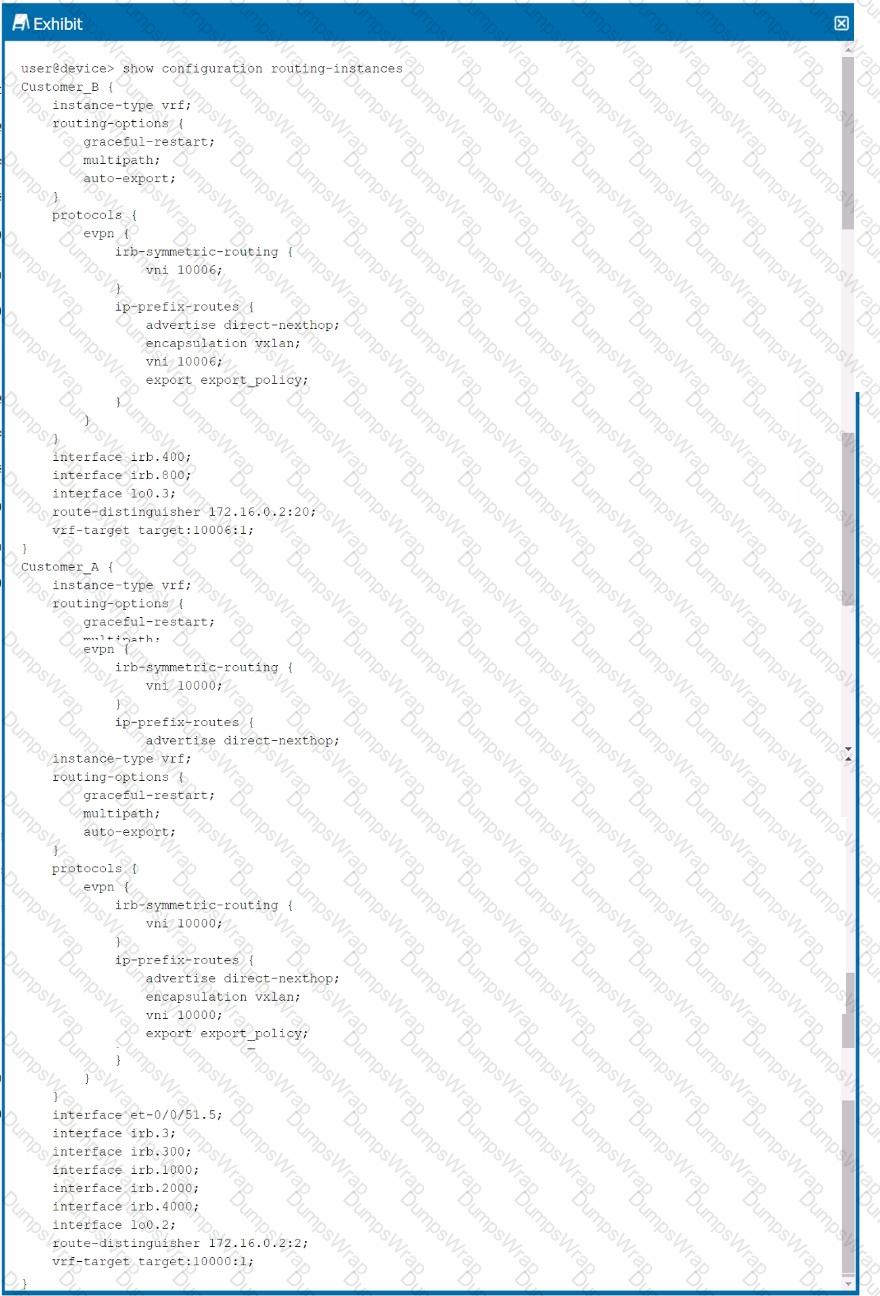
Referring to the configuration shown in the exhibit, assume that there is no external router present, and that the configuration is fabric-only.
Which two statements are true about the example configuration? (Choose two.)
You are deploying a new network lo support your Al workloads on devices that support at least 400 Gbps Ethernet. There is no requirement for any Layer 2 VLANs in this network. Which network architecture would satisfy this requirement?
Which three statements are correct about symmetric IRB routing with EVPN Type 2 routes? (Choose three.)
Which two statements are correct about an IP fabric? (Choose two.)

